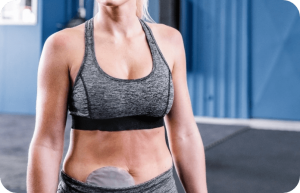What is Urinary Diversion?
If your bladder is removed during a radical cystectomy, an alternative way of passing urine out of your kidneys will need to be found. There are a number of different treatment options, which are described below. In some cases, you may be able to make a choice based on your personal preferences.
It may help to first understand how the urinary system works.
What is the Urinary System?
The urinary system consists of the kidneys, the ureters, the bladder and the urethra. The kidneys are responsible for filtering the waste products from the blood resulting in the production of urine. The urine then passes from the kidneys, down the ureters, to the bladder.
The bladder has two main functions, to store urine and then expel it. The bladder is made of a smooth muscle which is controlled by the automatic nervous system. A muscle called the sphincter muscle which is at the base of the bladder and wrapped around the urethra, prevents leakage of urine when tightened.
To empty the bladder the sphincter muscle relaxes, the bladder contracts and urine passes out of the bladder, through the urethra and then leaves the body.
Types of Urinary Diversion
Urinary diversions are sometimes divided into three types, continent, non-continent and neobladder. Neobladder can also be referred to as bladder reconstruction.
Continent Urinary Diversion
A continent urinary diversion is a similar sort of operation to an urostomy, except that you will not be required to use a pouch. A section of your bowel will be used to create an internal pouch that is used to store your urine.
The pouch will then be connected to your ureters at one end, and to a stoma that is made in your abdominal wall at the other end. You can empty the pouch by inserting a catheter (a thin, flexible tube) into the stoma and use it to drain away the urine. Most people need to empty their pouch about four to five times a day.
Non-continent Urinary Diversion
A urostomy or ileal conduit is the most common type of non-continent urinary diversion operation. A urostomy is the most common type of urinary diversion operation.
During the operation, the surgeon will make a hole in your abdominal wall. This hole is known as a stoma. A small section of your small bowel will be removed and connected to your ureters (the two tubes which, in normal circumstances, carry urine out of the kidneys). The other end of the small bowel will be connected to your stoma. A flat, water-proof pouch is then connected to the stoma to collect the urine.
Bladder reconstruction
In some cases, it may be possible to create a “new bladder”, known as a neobladder. This can be done by removing a section of your bowel and reconstructing it into a balloon-like sac, before connecting it to your urethra at one end and your ureters at the other end.
Due to the loss of normal nerve function, around 20%-30% of people with a neobladder will experience some episodes of incontinence (the involuntary passing of urine), which usually occur during the night when they are sleeping. It may be useful to empty your neobladder at set times each day, and then once more before you go to sleep, because this may help to prevent incontinence.
Managing Supplies
Your specialist nurse will advise you about how to obtain supplies of catheters and other equipment like wipes, disposal bags and dressings to protect your stoma from friction with your clothes. We run our own Bladder & Bowel Home Delivery service, and can provide all of your urostomy, wound care and prescription medications delivered right to your front door – find out more.
Further Information
If you are concerned about your urinary diversion and it is starting to affect your day to day life make an appointment to see your doctor. If you are experiencing problems, find out more general information about Urinary Diversion Complications.
For further support please contact the Urostomy Association. They offer support, reassurance and practical information to anyone who may be about to undergo, or who has already had surgery resulting in a urostomy, continent urinary pouch or a neo-bladder. Appropriate support and advice is also offered to families and carers both before and after surgery.








